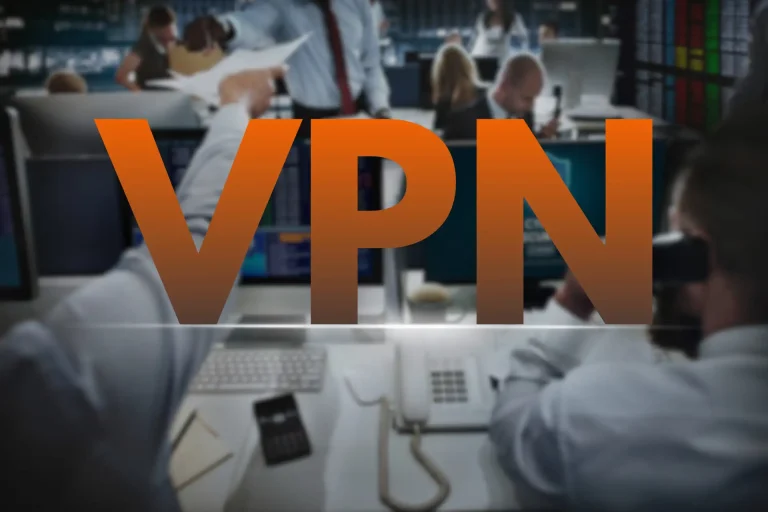Does your IT infrastructure have to be a “villa with a pool”?
Each of us has dreamed of a luxury villa with a swimming pool at some point. A big house, a garden, space, prestige. But with time comes the reflection: who will clean all this? How much does heating cost? How often do you actually use the swimming pool?
IT infrastructure in companies is very similar. Many owners of small and medium-sized companies get caught up in the spiral of expanding IT systems: another CRM, ERP, WMS, another company messenger (although employees don't even use the first one), servers, hybrid clouds, enterprise licenses, firewalls with reporting on every activity. Technological chaos creeps in, and then... it turns out that maintaining this "villa" costs more than it brings benefits.
Investing in IT solutions without the possibility of consulting someone who knows both the technical side and the business realities is like building a house without a design. The lack of an IT consultant may seem like a saving, but in practice it leads to inconsistent decisions, ill-considered investments and the aforementioned technological chaos. In many cases, it is the lack of such support that slows down the development of the company - because we either invest too much or too little, and sometimes simply not in what will actually bring value.
In this article, I would like to outline when it is worth investing in advanced IT systems and when it is better to rely on reasonable implementation of IT solutions, remote administration and tailored IT support for companies.

Dreams vs. reality
From the perspective of a business owner, implementing modern systems may seem prestigious. However, reality quickly verifies whether these investments make sense. Each additional system is not only a greater potential – it is also:
- • more responsibilities,
- • more updates,
- • more points of failure,
- • higher cost of living.
Style over substance – mistakes taken from real life
Here are some examples that we have come across as a company providing: IT outsourcing and administration of systems for companies:
- • 6-person company with full Windows Server and Exchange - enterprise-class infrastructure at such a small scale is not justified. The server would require constant care, updates, backups, and the monthly costs would significantly exceed a simpler and fully sufficient solution based on Microsoft 365 Business Standard with integration with Entra ID (formerly Azure AD) - which provides central identity and access management without the need to maintain an extensive local infrastructure. In practice, the company could achieve the same effect at a lower cost and less complexity.
- • Backup in three locations, but no restore test – on paper it looks impressive, in practice no one knows whether the data can be recovered. The implementation of a backup system alone is not enough – its operation and testing are crucial. This is where comprehensive IT care for companies.
- • E-commerce with Azure and private cloud with 1000 visits per month – servers and environment cost multiples of what an optimized VPS would cost. Instead of spending on unnecessary infrastructure, it would be worth investing in SEO or marketing.
Or maybe… sensibly?
It's like buying a sports car with a 400-horsepower engine. On paper, it's impressive, but:
- • burns a lot more fuel (read: budget),
- • you drive as much as the regulations and conditions allow,
- • and in the end you are stuck in a traffic jam like the rest – because everything depends on the customers, processes and people.
What's the point of having more power if you have nowhere to accelerate?
Unless it's a truck that brings real revenue to the company – then the situation changes.
It's the same as in our proposed solutions and implementations. It's not about "cutting costs to the bone". It's about efficiency – for the IT environment to support the business, not slow it down. Sometimes that means cutting unnecessary expenses, and sometimes – adding resources where they really make a difference.
There are situations in which excessive savings are as harmful as excessive investments – as when a 30-person company has one printer in the hallway and employees spend half their time waiting in line or looking for who took their documents.
Or when a company gives up on backup power supplies or UPSs for servers, because "the power rarely goes out." And then - a sudden power outage, damaged RAID, database failure and a whole day of work lost... on the optimistic assumption that the company had backups at all. There is a saying in our industry that people are divided into those who make backups (backups) and those who will make them - when they lose their data.
Another example is companies that perform repetitive tasks manually every day – such as collecting data for reports, issuing similar invoices or copying information between systems. With Microsoft 365 solutions implemented and using Power Automate, automating these processes would cost a dozen or so hours of implementation work, but would save dozens of hours per month. Without it – every day is a tedious “burn” of employee time and team irritation.
That is why in our implementations we are guided by the principle a wise balance between efficiency, work comfort and development. We select solutions that are actually useful – like in a fragment of the film "Clergy" – "golden, yet modest".
Instead of a villa – a well-designed apartment
Instead of a luxury villa – a well-planned apartment. In IT this means:
- • Microsoft 365 tailored to real needs,
- • NAS with incremental backup and one external copy,
- • simple VPN and remote access,
- • efficient handling of notifications without overcomplicated systems.
This isn't about "cutting costs". It's about efficiency. About that, each solution had its justification – business, not just technical.
How can you tell if you have over-scaling IT?
- • You don't know what exactly you're paying for.
The invoices come every month, but no one can indicate what real benefits the infrastructure paid for provides. The systems are there because "someone implemented them once." - • You have more tools than people using them.
New systems appear faster than the needs. Users cannot keep up with their use, which is why they only use some of the possibilities – and they are still overloaded with them. Tools and solutions develop over time. Maybe something that was not available through one system in the past is now within reach? - • Technology is blocking you instead of helping you.
Every minor change requires contact with the IT department, and instead of doing their job, the employee has to write requests for access to a file, form or application. After a few such situations, they start to put the matter off or avoid the process, which leads to chaos and reduces efficiency. Maybe it would be worth considering security systemically - e.g. at the level of accounts, networks, permissions - instead of at the level of end-user locks? - • The systems are too complex for ongoing maintenance.
A simple report requires three integrations, and an invoice goes through five systems before it reaches accounting. That's not automation - it's five potential failure points, where failure of one of them stops the entire process. - • And yet… something still isn't working.
You feel like the company has “everything it needs” and yet users still report problems with access, login, system speed, or email. This is a sign that the IT infrastructure is not working coherently, but is suffocating under its own weight.
Can “villa” actually make sense?
There are situations where larger solutions are fully justified and even necessary – and have nothing to do with the triumph of form over substance. This is not “waste”, but a conscious investment in development and security.
- • You process sensitive data (medicine, finance, production) – where strict regulations apply, and security and auditability are essential. In such cases, enterprise-class solutions, advanced backups, encryption, event logging and access control are not a luxury, but a necessity. There is also often a need to meet the requirements resulting from GDPR, NIS2 or ISO 27001 certification.
- • You service several dozen or several hundred workstations – and you need central management of access, equipment and user accounts. In such companies, standardization, automation and transparency of processes count – which requires appropriate tools and infrastructure.
- • You have a complex IT environment with multiple departments, locations and external partners – simple solutions are not enough here. You need systems that integrate with each other, provide high availability, and at the same time enable rapid scaling, migrations or disaster recovery.
- • You want full scalability and enterprise-level integration – development requires systems that will not be a barrier to growth. Complex ERP systems, HA virtualization environments, database clusters – all of this makes sense when it serves a specific business purpose and is properly maintained.
- • Your company is growing rapidly – and you need solutions that not only meet current needs but are designed to scale in a year or two. Sometimes it pays to think two steps ahead, rather than starting all over again in a few months.
- • You have high expectations from your customers or partners – sometimes “villa” is not a choice, but a standard required in tenders, audits or B2B integrations. In such cases, modest infrastructure could simply exclude you from the market.
- • Your team actually uses advanced tools – if employees are able to use the potential of implemented systems, their efficiency and work safety justify higher costs. Then the investment in the “villa” pays off.
In such cases, we are able to provide the same high level of sophistication as simplicity in smaller implementations – but with the right approach, documentation, development plan and long-term support.
It's not about avoiding advanced solutions. It's about implementing them when they are really needed and work to grow the business.
What is worth checking before investing in new IT solutions?
Before you reach for another “innovative” tool, consider whether it’s really something that will propel your business forward. Too many companies invest in technologies just because they sound modern or “that’s what the competition is doing.” Meanwhile, good IT isn’t a fashion show, but a real value for the company. Check it out for yourself:
- • Does this solution solve a specific problem?
Will it actually make your work easier, or is it just adding another panel to log in? If the system doesn't solve any significant problem - then why implement it? - • Is my company ready to handle this?
Technology without support is a ticking bomb. Who will update, who will respond in the event of a failure, who will even know how it works? Without technical support – internal or external – it is better not to touch it. - • Will the team benefit from it?
The world's most expensive system won't change anything if people give it a wide berth. Implementation must also be thought through with user convenience in mind - or it will become a "modern ball and chain." - • Can the same thing be achieved more easily or cheaper?
Do you really need to build a multi-tiered system to achieve this effect? Maybe VPN access, as opposed to a whole hybrid cloud, will be more than enough? Instead of getting excited about technology, it’s worth thinking first – what do you really need? - • Is this solution scalable?
The system should develop with the company. If you implement something today that will have to be completely replaced in a year, it is better to look for a flexible solution right away. IT should not slow you down in your development, but facilitate it.
By answering these questions, you will not only avoid unnecessary costs - you will also gain technology that really works for your result. Because that is what optimized IT solutions are all about: to be thoughtful, tailored and supportive - in other words - "golden, but modest".
How we approach IT
In smaller companies, there is no point in complicating things – that is why we focus on simple and reliable IT environments that work efficiently and do not require constant attention. In larger organizations, we focus on scalability, integration and stability – with full documentation, predictable costs and guaranteed response time (SLA), if the scale requires it.
We always start with a question: what is really needed? An IT audit allows us to see what works, what interferes, and what can be simplified – without losing functionality and without the risk of chaos.
It's not about finding savings at all costs. It's about the technology was useful, tailored and ready to support the company in its development. A practical, thoughtful approach – with a vision, but not an overgrowth of style over substance. And if the company grows – we are also ready to go a step further.
Not sure if your IT is a villa with a swimming pool or a well-furnished apartment?
Or maybe you want or need to have a villa with a swimming pool? Even if so, you probably don't want to waste money on its maintenance. Contact us - we will talk about what you really need, what IT solutions will be effective, scalable and tailored to your company. Simple (like our name, which didn't come from nowhere), but also without limiting development.
We will ensure an IT environment that operates sensibly, securely, and in proportion to your current scale and growth plans.





